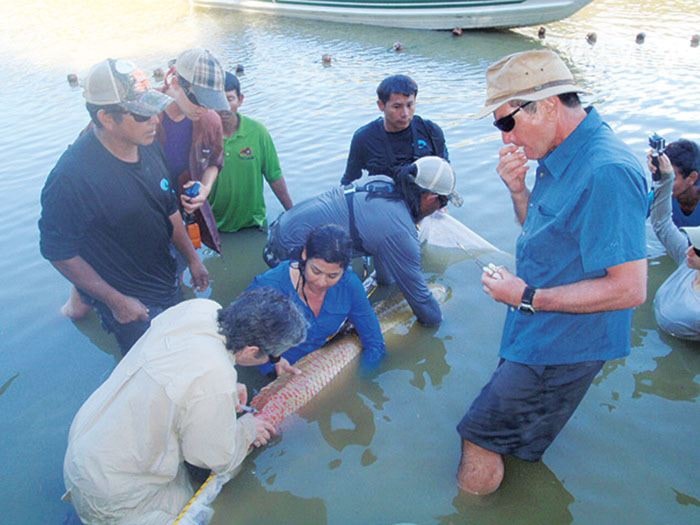Conservation of threatened aquatic species is a concern that is both local and international.
The Campbell River non-profit society, the BC Centre for Aquatic Health Sciences (BC CAHS) supports conservation efforts that extend far outside the local area – even as far as Guyana in South America.
BC CAHS CEO Jim Powell joined a team of scientists looking into developing a catch-and-release strategy for the apex predator fish the arapaima. Arapaima are a game fish sought by high-end fly fishers because of their great size (up to 250 lbs), and their acrobatics when hooked. Because of their size and value, they are often poached despite non-retention regulations that permit sport fishing catch and release. Tourism infrastructure development is seen as a method to raise awareness and protect the threatened river monster.
The International Development Bank and Canadian International Development Fund support an initiative that is training indigenous fishers to become fishing guides for tourists. The catch and release strategy dovetails with a scientific effort to understand the population genetics of the fish, define its habitat use, chart its seasonal movements and gauge the effect of catch and release activities. Powell was part of the scientific team because of his experience in recreational fisheries and his formal training as a fish physiologist. His role was to obtain tissue samples for DNA analysis and blood for stress hormone levels.
When the team was on the ground in Guyana they found that sparse ‘Cashew rains’ in November did not leave the Arapaima with enough water in their breeding ponds and many ponds had dried. Because the Amerindian riverine food fishes had left the area for deeper water, the indigenous people took to harvesting the now vulnerable Arapaima.
Many prospective adult brood fish were harvested due to lack of food. The situation was made worse by delayed arrival of the March rains that flood the savanna and open up feeding grounds for newly-hatched Arapaima. The fish were seine netted by the staff, measured for length and girth, weighed and the tissue/blood sample taken. The DNA samples will be archived for later sequencing and the blood samples analysed in the BC CAHS lab for the stress hormone cortisol. The team will be back in November to focus on another region that did not witness the full impact of the changing environmental pattern.
